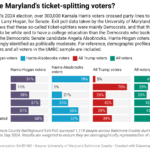Cycling offers many benefits — from reducing traffic and lowering pollution to promoting healthier lifestyles. But for all its advantages, riding a bike comes with real risks. Cyclists are vulnerable in traffic, and when crashes happen, the injuries are often severe. In Oklahoma, bicycle accident cases can become especially complicated because of the state’s comparative fault rules.
- What Is Comparative Fault?
- Oklahoma’s Modified Comparative Fault Rule
- How Fault Is Determined in Bike Accidents
- Common Accusations Against Cyclists
- Why Cyclists Are at a Disadvantage
- The Role of Legal Representation
- Maximizing Compensation in Comparative Fault Cases
- How Comparative Fault Shapes Settlements
- Comparative Fault and Jury Perceptions
- Building a Safer Future for Cyclists
- Fighting for Fairness in Comparative Fault Cases
Comparative fault determines how blame is shared between drivers, cyclists, and sometimes even pedestrians in an accident. Understanding how these rules work is critical for injured cyclists who want fair compensation for medical expenses, lost wages, and long-term recovery.
What Is Comparative Fault?
Comparative fault is a legal principle that assigns responsibility when more than one party contributes to an accident. Instead of declaring one side entirely at fault, courts divide the blame into percentages. Each party’s share of responsibility reduces the damages they can recover.
For instance, if a cyclist is found to be 20% responsible for a crash, any compensation awarded will be reduced by that percentage. This system aims to be fairer than an “all or nothing” approach, but it also opens the door for insurance companies to argue that cyclists played a bigger role in the crash than they actually did.
Oklahoma’s Modified Comparative Fault Rule
Oklahoma follows a modified comparative fault system with a 51% bar rule. This means an injured person can only recover damages if they are less than 51% at fault. If they are equally responsible or more responsible than the other party, they cannot collect any compensation.
For cyclists, this rule carries serious consequences. Insurance companies often try to argue that the rider’s actions — such as not using a designated bike lane, failing to signal, or wearing dark clothing at night — contributed heavily to the accident. If they succeed in pushing fault above the 51% mark, the cyclist may be barred from any recovery at all.
How Fault Is Determined in Bike Accidents
Determining fault is a detailed process that relies on evidence. Police reports, traffic camera footage, medical records, and eyewitness accounts all play a role. In some cases, accident reconstruction experts may analyze skid marks, vehicle damage, and road conditions to provide insight into what happened.
In bicycle crashes, even small details are closely examined. Was the cyclist wearing reflective gear? Were bike lights functioning properly? Did the driver check blind spots before turning? These questions highlight how comparative fault disputes often hinge on technicalities that can drastically change the outcome of a case.
Common Accusations Against Cyclists
To reduce payouts, insurance adjusters and defense attorneys frequently argue that cyclists were partly to blame. Common claims include:
- Riding outside of bike lanes when one was available
- Ignoring traffic signals or failing to stop at stop signs
- Riding against traffic instead of with it
- Wearing headphones or being otherwise distracted
- Lacking proper lights or reflective clothing at night
Even if some of these factors are true, they do not always mean the cyclist caused the accident. Still, comparative fault rules allow these arguments to reduce compensation if not challenged effectively.
Why Cyclists Are at a Disadvantage
Cyclists are inherently more vulnerable than drivers. In a collision, the cyclist almost always sustains the most serious injuries, while the driver may walk away unharmed. Despite this, cyclists often face stereotypes that they are reckless, overly aggressive, or disregard traffic laws.
These biases make it easier for insurers to shift blame onto cyclists, even when drivers clearly acted negligently. This imbalance means comparative fault rules can sometimes punish cyclists more harshly than drivers, which makes strong evidence and skilled advocacy essential.
The Role of Legal Representation
A knowledgeable bike accident attorney plays a vital role in leveling the playing field. Attorneys gather critical evidence such as surveillance footage, black box data from vehicles, and driver cell phone records that may show distraction. They may also bring in experts to testify about traffic safety and bicycle laws.
Perhaps most importantly, attorneys push back against unfair blame-shifting. They challenge arguments that seek to exaggerate cyclist fault and ensure the focus remains on the driver’s negligence, road conditions, or other contributing factors.
Maximizing Compensation in Comparative Fault Cases
Cyclists can take steps to strengthen their claims and reduce the percentage of fault assigned to them. These include:
- Reporting the accident immediately to law enforcement, so an official record exists.
- Seeking prompt medical care to document injuries and establish a timeline.
- Preserving evidence such as damaged bikes, clothing, or helmets.
- Documenting recovery with medical receipts, therapy notes, and journals tracking pain or mobility issues.
Even small details, like showing that safety equipment was in use, can make a significant difference in reducing the cyclist’s share of fault and maximizing compensation.
How Comparative Fault Shapes Settlements
Comparative fault doesn’t only matter in court — it also plays a huge role during settlement negotiations. Insurance companies use the possibility of shared blame as a bargaining tool, often claiming a cyclist was 30% or 40% at fault to justify lowering settlement offers.
Without experienced legal representation, cyclists may accept unfairly low settlements out of fear that they will receive nothing if the case goes to trial. Skilled attorneys anticipate these tactics and negotiate aggressively to ensure cyclists aren’t pressured into giving up rightful compensation.
Comparative Fault and Jury Perceptions
If a case goes to trial, juries also play a role in assigning fault percentages. Jurors bring their own perspectives about cyclists, which can influence decisions. For example, if jurors believe cyclists often “ignore the rules,” they may be more inclined to assign blame even when the evidence shows the driver was primarily at fault.
This makes the way evidence is presented in court especially important. Strong legal advocacy can help shape the narrative, highlight driver negligence, and counter negative stereotypes about cyclists.
Building a Safer Future for Cyclists
Comparative fault rules highlight the need for stronger awareness of cycling laws. Both drivers and cyclists share responsibility for road safety. Public education, improved infrastructure, and stricter enforcement of traffic laws can help reduce the frequency of disputes over blame.
For cyclists, knowing their rights and obligations is equally important. Following traffic rules, using safety equipment, and documenting their rides not only helps them stay safer but also strengthens their legal standing in the event of an accident.
Fighting for Fairness in Comparative Fault Cases
Comparative fault rules in Oklahoma aim to balance responsibility in accidents, but for cyclists, they often add extra hurdles to recovery. A severely injured rider may see their compensation reduced — or even eliminated — if they are found more than 50% at fault.
Despite these challenges, cyclists still have powerful tools to protect themselves. With strong evidence, careful documentation, and experienced legal support, they can push back against unfair blame and secure the financial recovery needed to move forward. Comparative fault complicates the process, but it doesn’t erase the right of injured cyclists to seek justice.




